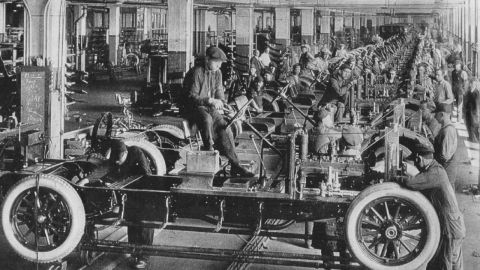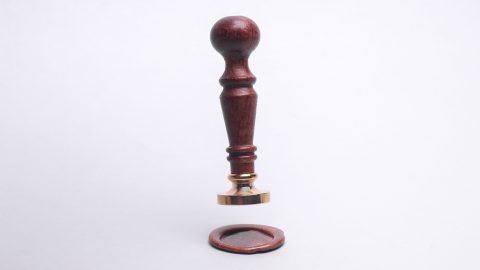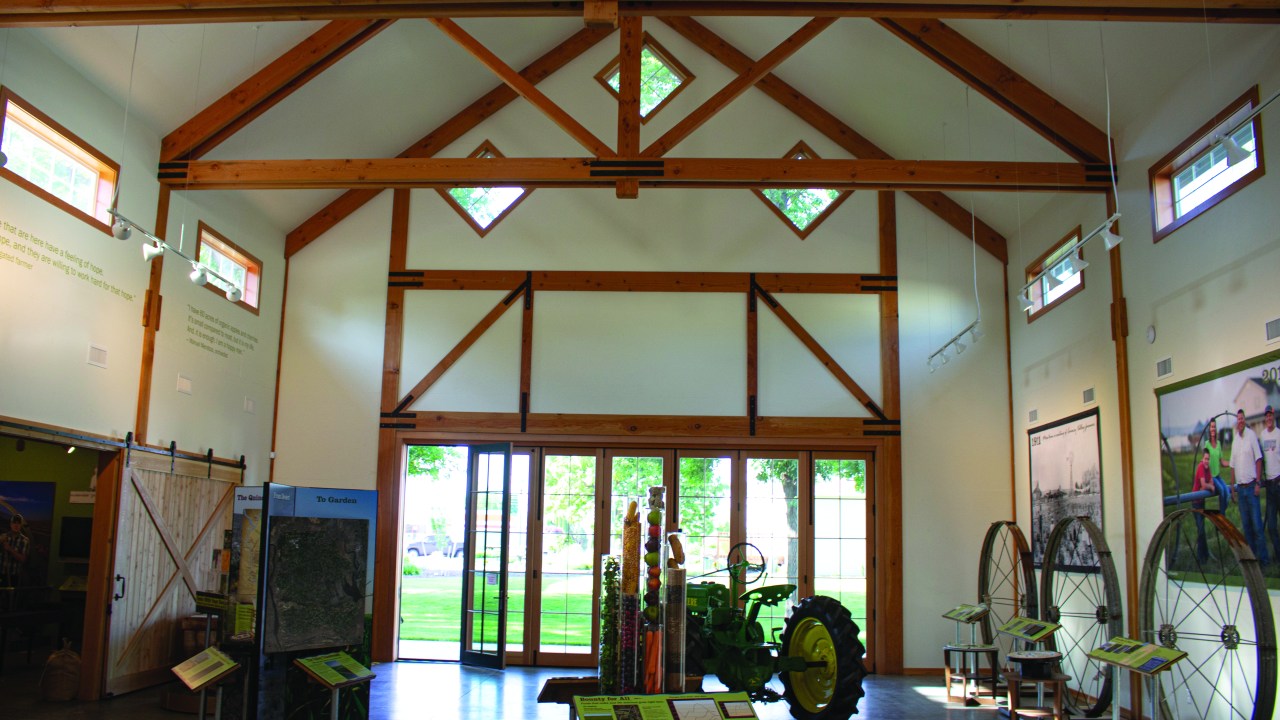
This article originally appeared in Museum magazine’s March/April 2024 issue, a benefit of AAM membership.
The Quincy Valley Historical Society & Museum is a community jewel that runs mainly on volunteer power.
On a warm Saturday morning this past July, nine volunteers assembled in the Heritage Barn at the Quincy Valley Historical Society & Museum (QVHSM). Over coffee and donuts, the group discussed the laundry list of chores that awaited them: the furnace in the Reiman-Simmons House was due for a filter change, the vegetable garden needed attention, a post at the Pioneer Church required touch-up paint, and someone would have to wrestle with internet connectivity issues.
The volunteers, dubbed years ago the Manly Men & Wonder Women, have met on the first Saturday of each month since the museum’s inception in 2001 to maintain and improve its structures and grounds. People come and go in this crew, but there are consistently between eight and 12 people on a scheduled working day.
The Manly Men & Wonder Women volunteers belong to an extended family of helpers who serve the QVHSM. Since its beginning, the museum has been privately funded and primarily run by volunteers.
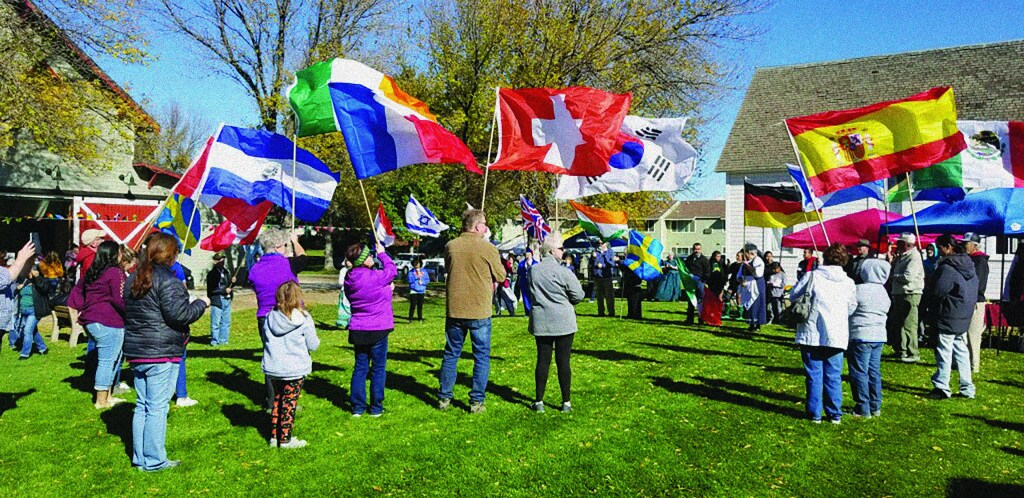
Creation Story
The museum sits on a busy thoroughfare in Quincy, Washington, a small town located in the middle of the state. The area is notable for its agriculture, cloud computing data centers, and tourism—strange bedfellows that share the benefits of the nearby Columbia River. Quincy was born as a railroad camp during the advancement of the Great Northern Railway in the late 1800s. The construction of Grand Coulee Dam in the early 20th century led to the development of the Columbia Basin Reclamation Project, which brought water to the area’s fertile desert soil and transformed the region into a farming capital.
Nearby, the Gorge Amphitheater attracts popular musical acts and thousands of visitors each summer. The Columbia River is a recreational draw, and the area is a geological wonder shaped by ancient glaciations and floods. Microsoft and other tech companies benefit from cheap hydroelectricity to power their data centers. Despite its proximity to business and entertainment giants and extensive recreation options, the town of Quincy has remained relatively small, with an estimated 2023 population of 8,700.
Garland “Gar” Pilliar, a longtime Quincy resident and a building code officer for the city of Quincy, was integral to the creation of the QVHSM. Through his work, he knew about a prominent home built in 1904 that was deeded to the city. The benefactor stipulated that the property must serve as a heritage site that would benefit the community.
In 2001, after the municipality had performed a structural assessment of the house and replaced the roof, Pilliar posted an advertisement in the local newspaper seeking people interested in revitalizing the home. A few townsfolk answered the plea, including Harriet Weber, the current Director of Operations and a longtime champion of the museum. The group began restorations, which included rebuilding the porch from early 20th century photos, installing an HVAC system, adding an ADA-compliant bathroom and office space and access to the back of the house, and replacing 1950s kitchen items with donated fixtures from the early 1900s (i.e., wood cookstove, dry sink, ice box, and crank telephone).
The house was named the Reiman-Simmons House in honor of Lauren Simmons, who donated the house to the city upon his death in 1995, and Samuel and Katherine Reiman, German-Russian immigrants who moved to Quincy in 1904 and built this fine home. As this rehabilitation work commenced, the QVHSM began to develop its mission to be a hub of history and culture in the community.
What QVHSM Offers
The house, beautifully restored, is now listed on the National Register of Historic Places and is a focal point on an expansive property that has matured into a local treasure. Over the years, the site has grown to include a local landmark church (christened the Pioneer Church) that was relocated to the museum site and meticulously renovated, and several constructed outbuildings, including an ADA-approved restroom facility.
In 2018, with help from the community and grant funding, the Heritage Barn was raised on the site. The barn includes space for large gatherings, a commercial kitchen, contemporary archive space, and hands-on exhibits, including the professionally designed exhibition “Hope and Hard Work: The Story of Our Farms and Food.” The exhibition tells the story of farmers and farmworkers from the early 1900s through today and features video, audio, and interactives for adults and children, including a hand-cranked french fry sorter, an apple tree with weighted apples and a picking bag, an antique tractor (used in mid-century Quincy) to climb on, and crops to identify. An augmented-reality app features short videos of local farmers discussing their lives.
As the physical evolution of the QVHSM took shape, programs and events breathed life into the property. Functions started small with events like high tea and tours of the Reiman-Simmons House. Over time, as the museum’s popularity grew, programming expanded. A foundational event was the annual Harvest Festival, which evolved into the current Celebration of Cultures. The function attracts hundreds of people to the property, offering food and dance from various heritages, and costumed volunteers assist participants with hands-on exhibits, including apple cider pressing, fry bread cooking, old-fashioned laundry scrubbing, and candle and quilt making.
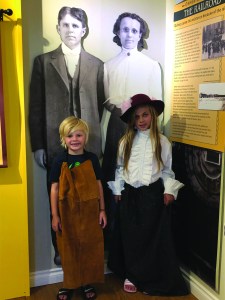
The holiday season brings the beloved Old Fashioned Christmas celebration, where attendees gather to sing carols, read scripture, and participate in the lighting of the Tannenbaum. Each fall, busloads of third-graders, known as Time Travelers, descend upon the museum grounds to reenact life in pioneer times. To prepare for the field trip, teachers and librarians engage the students with artifacts and lesson plans from the “Quincy, My Home” activity booklet. For 21 years, the program has been a cooperative effort between the local school district and the museum.
In addition to these mainstay events, our museum hosts numerous functions throughout the year, such as popular bus tours, poetry readings, concerts, and a speaker series. People are encouraged to explore the museum during visiting hours and wander leisurely through the exhibits, grounds, and buildings. Museum members and the public are kept abreast of museum happenings through a website, Facebook page, email notifications, the QVHSM’s twice-yearly Jackrabbit Journal newsletter, newspaper announcements, word of mouth, and posters prominently displayed throughout the community.
A Volunteer Affair
Of course, the QVHSM requires capital to function and serve the community. The museum, incorporated in 2002 as a 501(c)3 charity, has an annual budget of more than $140,000 and heavily relies on donations and contributions for its income. Almost 250 members produce about $3,000 annually in membership funds, and upwards of $30,000 is donated to the museum each year. As the owner of the property, the city of Quincy partially maintains the buildings and grounds and allocates a portion of the lodging tax to the QVHSM.
Additionally, Weber has donated countless hours seeking, applying for, and securing funding from regional foundations and trusts. Recently, her efforts paid off with a fourth grant from the Washington State Historical Society Heritage Capital Projects program. This funding has previously been used to restore the front porch on the Reiman-Simmons House ($27,000), the Pioneer Church ($475,000), and the Heritage Barn ($550,000). This most recent grant will be used for the climate-controlled archive in the Heritage Barn ($40,000).
Budget expenditures include programs and events, maintenance and improvements, archival input, and operational and administrative costs. The QVHSM has three paid staff members: a bookkeeper paid for five hours of work per week, a staff archivist and docent paid for six hours of work per week for a portion of the year, and Weber, the full-time Director of Operations, who earns $1,500 monthly. Employees do not receive benefits.
To keep the museum humming, at least 15 regular volunteers donate hours each week to help with responsibilities such as caring for archives, serving as docents and hosts, stocking the kitchen, managing the gift shop, and providing weekly site maintenance. Twelve board members meet monthly and are active volunteers in other aspects of museum life. Additionally, 80–90 volunteers are readily available to help with events, maintenance, festivals, and student field trips.
We have a healthy mix of professionals, business owners, craftspeople, and skilled laborers who offer their talents. Many positions simply require a willingness to serve and a friendly demeanor. We don’t have a formal training program. Existing volunteers mentor new people who can eventually create new programs they feel passionate about. “No matter the volunteer’s ability, there is a place for them. There’s a place for everyone,” Weber says. QVHSM volunteers range in age from 6 to 85, with a significant proportion 55 and older.
Volunteers are often involved elsewhere in the community, from service clubs to art organizations, and therefore have developed networks they can tap when the museum needs additional assistance. The QVHSM has allowed local nonprofit organizations to use the Heritage Barn as a meeting venue, and in return, these groups contribute volunteer hours to the museum.
The QVHSM benefits from 5,000 recorded volunteer hours per year, which equals about 106 hours per week, or nearly three full-time employees. The atmosphere is intentionally welcoming, and leaders have prioritized reaching out to diverse community members for input and support. Volunteers often express a sense of ownership and pride in the museum’s accomplishments.
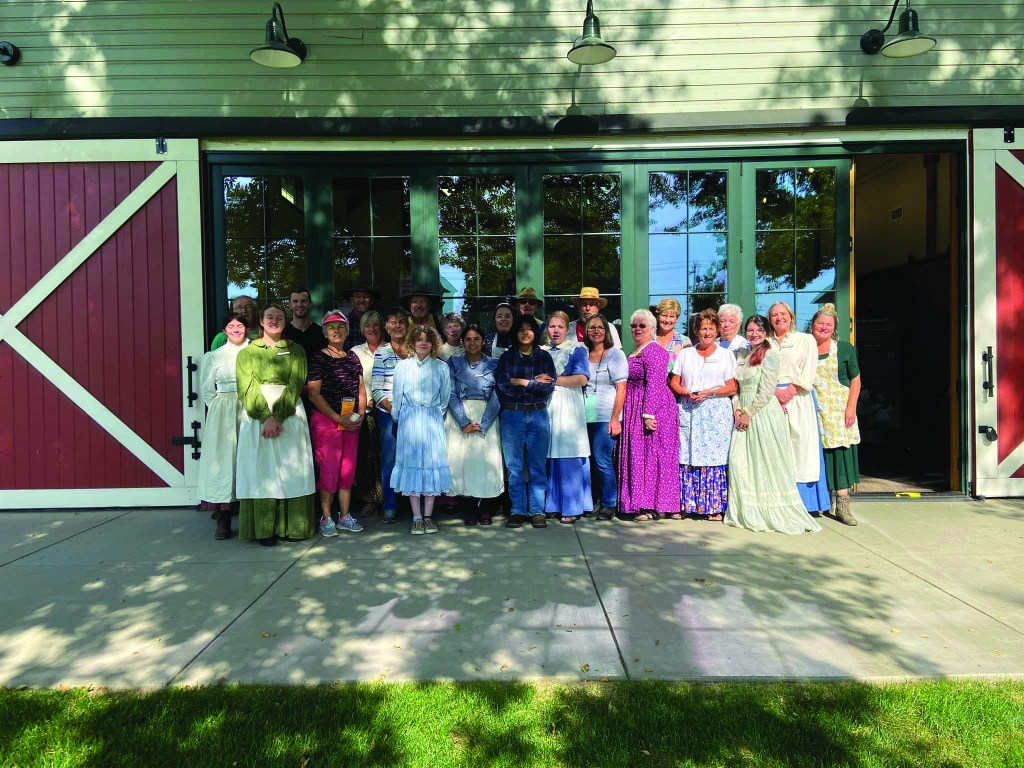
What the Future Holds
Despite many positive developments at the QVHSM, the organization faces considerable challenges. A fundamental issue is the sustainability of the current volunteer-driven formula. At some point, a new person, or people, will need to fill the director of operations role. Finding someone willing and able to do so much for so little compensation will be a tall order. The position requires dealing with the multifaceted day-to-day operations of an organization powered predominantly by volunteers, along with expertise in community outreach, marketing, and nonprofit funding.
Also, our current volunteers are aging, and younger candidates have not yet filled the potential void. To address this, we regularly collaborate with the high school’s Future Farmers of America club and the choral and theater departments, whose members help with our festivals and events. We have also focused on including families with children in our events.
Our volunteers come with a high degree of passion for the museum, and we honor them with an annual volunteer appreciation luncheon and say “thank you” regularly. The challenge is that someone must be there to fill in the gaps when volunteers cancel or leave early, or if they fail to finish projects. Good communication with volunteers when they take leadership for projects helps; agreeing up front to what will and won’t happen is crucial. Even then, it can be trying sometimes. And in addition to volunteer concerns, there are ever-increasing regulatory requirements, and in recent years, expenses such as insurance and security have skyrocketed.
The formation of the QVHSM was guided by the ingenuity and altruistic spirit of its founding volunteers. The dream of restoring a landmark property that nurtures the community and historic preservation has been realized beyond expectation. Through their volunteerism and financial investments, the citizens of Quincy have continually supported this vision and have been rewarded with a property that is a place of pride for the community. Hopefully, the museum will continue to thrive as it rises to meet its future challenges.
Volunteer Best Practices
Discourage cliques. The Quincy Valley Historical Society & Museum is committed to creating an inclusive and engaging environment, genuinely embodying the ethos of “Everyone’s Museum.” We prioritize maintaining a professional atmosphere with our dedicated volunteers by avoiding favoritism and steering clear of cliques, recognizing the potential harm of closed groups.
Lead inclusively. Sensitivity to individuals’ feelings, backgrounds, and diverse cultures is paramount to us. Our leaders guide the museum’s direction but believe in fostering a collaborative and invested community where everyone feels valued and included.
Pick your battles. If an issue arises, speak kindly but frankly with volunteers. However, knowing when to overlook something and when to speak is a skill anyone overseeing volunteers must develop. Personalities can be challenging, so a mature individual who is not easily offended is a must.
Resources
Quincy Valley Historical Society & Museum website
Quincy Valley Historical Society & Museum Facebook page
“Historical Society Pushes Heritage Barn Toward the Finish Line,” The Quincy Valley Post-Register, Sept. 7, 2018




